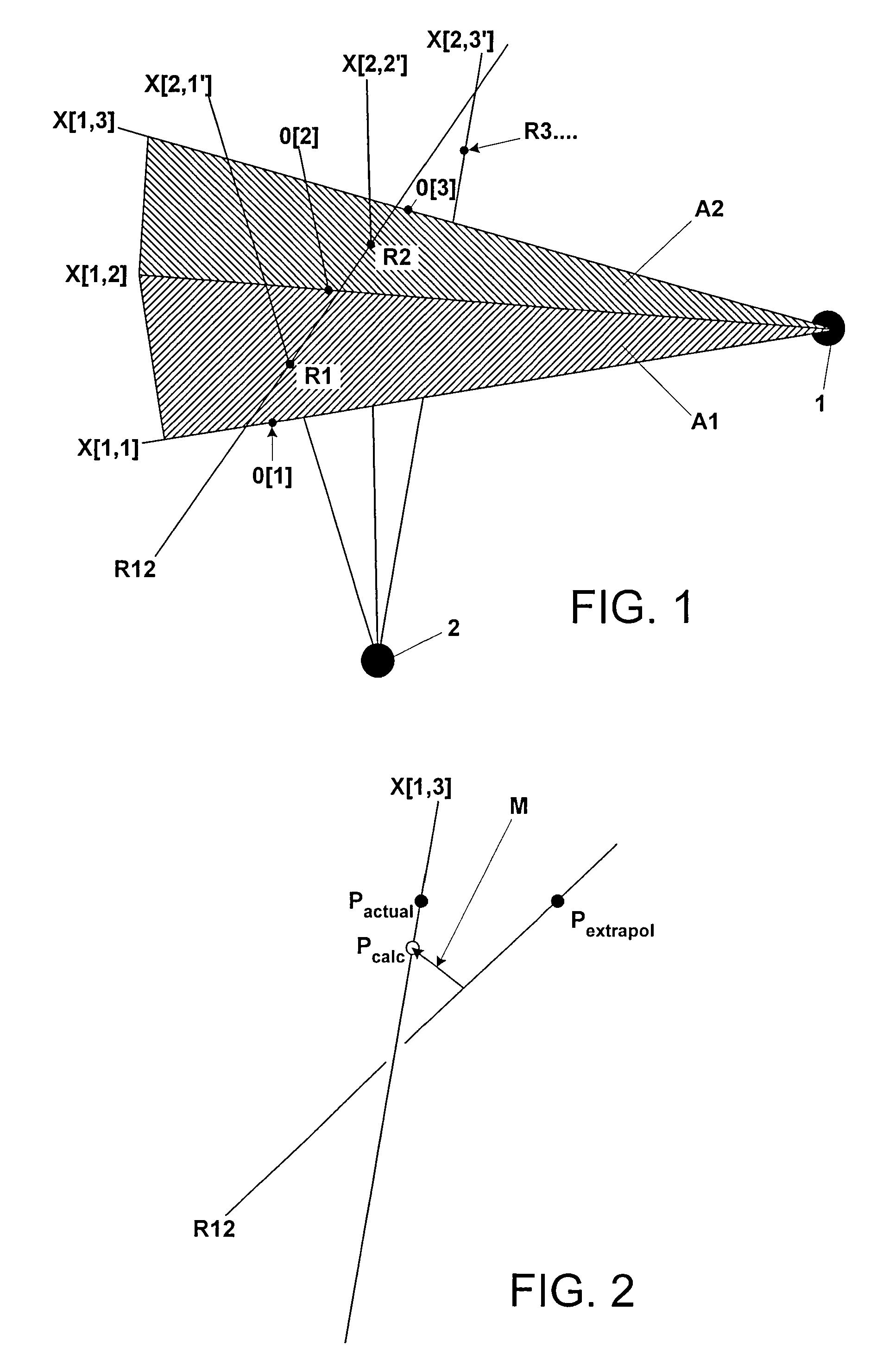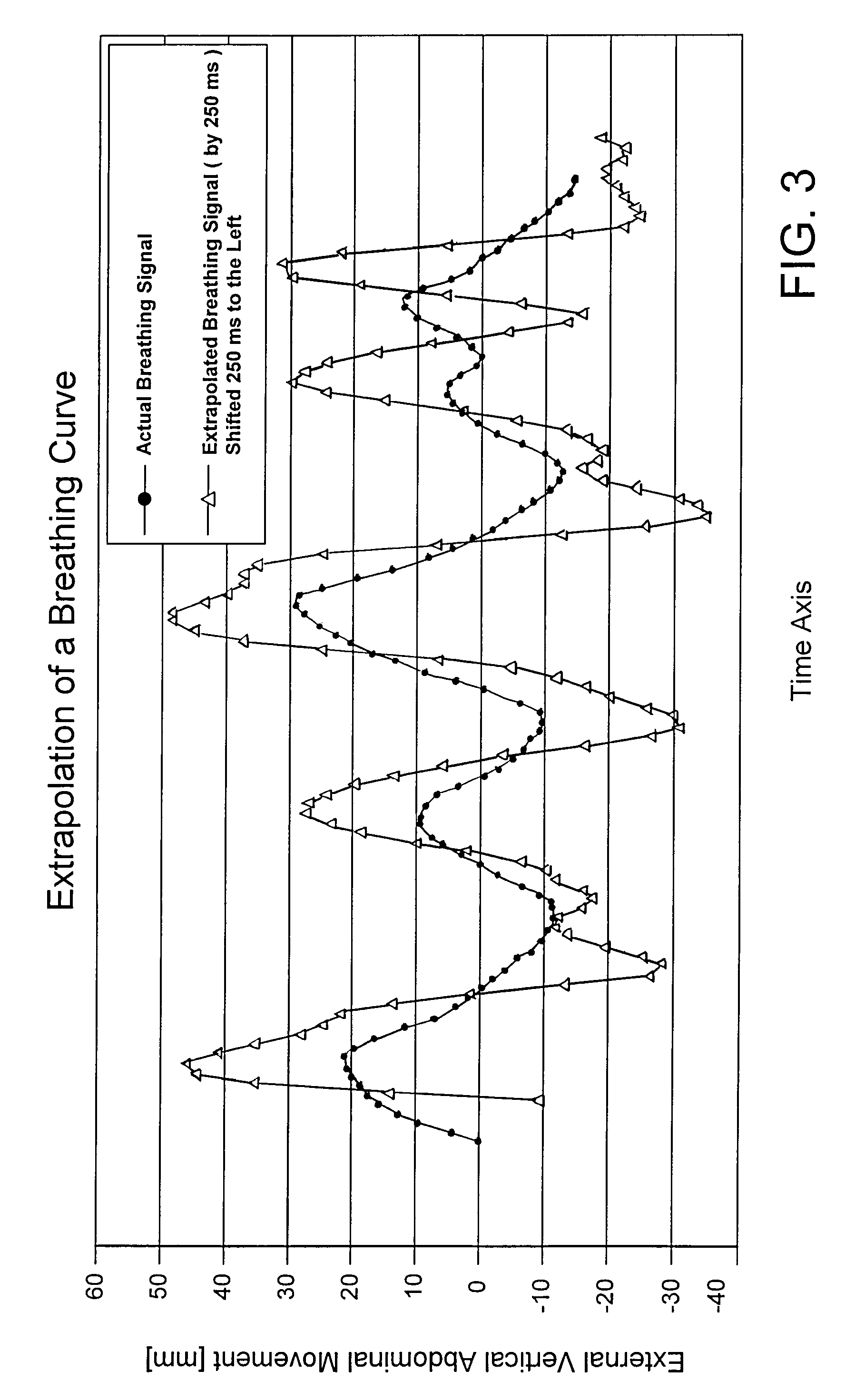Non-diagnostic stereoscopic x-ray tracking of moving objects in the context of radiotherapy and radiosurgery, with time-offset image recording
a technology of stereoscopic x-ray tracking and moving objects, applied in the field of x-ray tracking, can solve the problem of system exposure of patients to a relatively high radiation load, and achieve the effect of avoiding damage to healthy tissue and specifically irradiating diseased tissu
- Summary
- Abstract
- Description
- Claims
- Application Information
AI Technical Summary
Benefits of technology
Problems solved by technology
Method used
Image
Examples
Embodiment Construction
[0057]FIG. 1 shows two x-ray sources 1 and 2, and an object O that moves through a number of successive points in time, i.e., the object O[1] at Time 1, the object O[2] at Time 2 and the object O[3] at Time 3. The position of the object is tracked as follows:
[0058]At Time 1, a first x-ray image is produced using the x-ray source 1, and a viewing line X[1, 1] in this x-ray image passes through the object O[1]. The object then moves on and at Time 2 comes to the point at which it is shown by 0[2]. An x-ray image is in turn also produced at this point in time by the source 1, and the viewing line X[1, 2] is obtained.
[0059]Between Time 1 and Time 2 (in this example, after half the time has passed), i.e., at the intermediate point in time 1′, an x-ray recording is produced using the x-ray source 2 and having the viewing line X[2, 1′]. If the surface A1 between the viewing lines X[1, 1] and X[1, 2] is then calculated and / or spanned, it is also possible to calculate the point at which the ...
PUM
 Login to View More
Login to View More Abstract
Description
Claims
Application Information
 Login to View More
Login to View More - R&D
- Intellectual Property
- Life Sciences
- Materials
- Tech Scout
- Unparalleled Data Quality
- Higher Quality Content
- 60% Fewer Hallucinations
Browse by: Latest US Patents, China's latest patents, Technical Efficacy Thesaurus, Application Domain, Technology Topic, Popular Technical Reports.
© 2025 PatSnap. All rights reserved.Legal|Privacy policy|Modern Slavery Act Transparency Statement|Sitemap|About US| Contact US: help@patsnap.com



